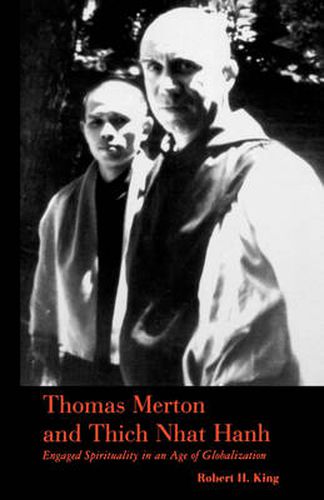Readings Newsletter
Become a Readings Member to make your shopping experience even easier.
Sign in or sign up for free!
You’re not far away from qualifying for FREE standard shipping within Australia
You’ve qualified for FREE standard shipping within Australia
The cart is loading…






Thomas Merton and Thich Nhat Hanh were and are two of the foremost spiritual writers of their times. They met only once–at Gethsemani Abbey on May 26, 1966. Individually, says Robert King, they are important, but considered together they may be even more significant. For although their lives developed independently of one another and took quite different forms, they shed light on each other in wonderful and unexpected ways. What binds the two is the theme of contemplation and action. King explores how they came to understand the relationship between contemplative practice and social action in the context of their respective religious traditions, and he identifies the common features in their approach to engaged spirituality–a form of religious practice that could serve as a unifying paradigm for the world’s religions in an age of globalization.
$9.00 standard shipping within Australia
FREE standard shipping within Australia for orders over $100.00
Express & International shipping calculated at checkout
Thomas Merton and Thich Nhat Hanh were and are two of the foremost spiritual writers of their times. They met only once–at Gethsemani Abbey on May 26, 1966. Individually, says Robert King, they are important, but considered together they may be even more significant. For although their lives developed independently of one another and took quite different forms, they shed light on each other in wonderful and unexpected ways. What binds the two is the theme of contemplation and action. King explores how they came to understand the relationship between contemplative practice and social action in the context of their respective religious traditions, and he identifies the common features in their approach to engaged spirituality–a form of religious practice that could serve as a unifying paradigm for the world’s religions in an age of globalization.